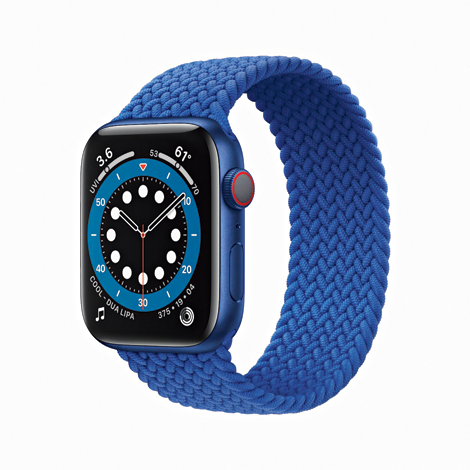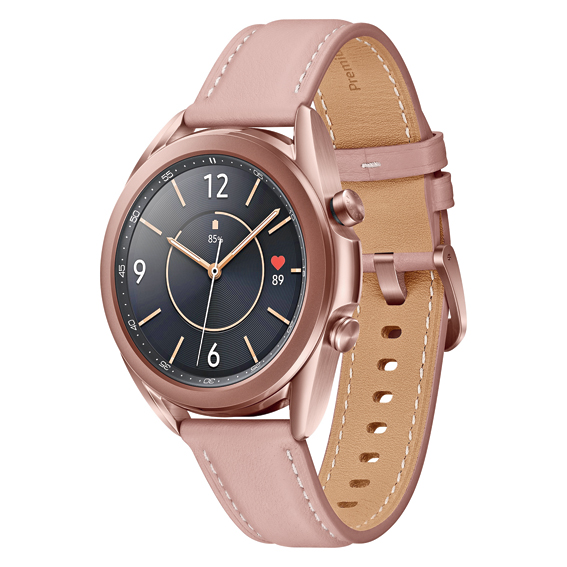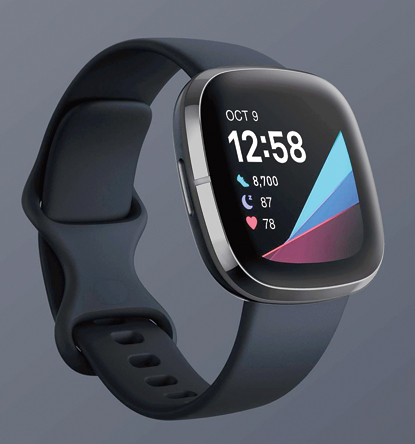Till 2015, several consumer electronics firms were trying to provide watches that were more geek-wear... some were hideous-looking devices powered by some cool tech. Pebble and Fitbit were an exception. Then it all changed. The Apple Watch arrived. People who once didn’t see the point of wearing a smartwatch began to give it a try. Apple realised that a smartwatch needed to be far more personal than the iPhone. That’s the thing about Apple, it may not be a first mover but it can certainly dominate a new multi-billion-dollar product category.
“What’s interesting is that I think there is a strong analogue to timekeeping technology here for our own products and computational devices. Think about clock towers, and how monumental but singular they are. They are mainframes. From there, clocks moved into homebound objects, but you wouldn’t have one in every room; you might have one for the whole house, just like PCs in the 1980s. Then maybe more than one. Then, time-telling migrated to the pocket. Ultimately, a clock ended up on the wrist, so there is such a curious connection with what we wanted to do, and that was a connection we were really very aware of,” Apple’s former design head Jony Ive said in a 2018 interview with Hodinkee.
What’s more, like AirPods have inspired a clone war, the Apple Watch is inspiring derivatives like the Oppo Watch, which has a similar form factor but the software is less cramped than others. It brings us to the question of what should be your next smartwatch or if it is at all needed?

Apple Watch Series 6 with the distinct Braided Solo Loop and blue aluminium case. Apple
Apple Watch stands for consistency
In 2020, wearable sensor data has high value, so no wonder the new Apple Watch Series 6 is a sensor fest. It has something for everybody — newcomers to the Apple universe, for owners of Series 3 who want an ECG app or for the Series 5 crowd convinced by the blood oxygen sensor and U1 chip on the new set. Above all, if you have an iPhone and you want a smartwatch, don’t choose anything but an Apple Watch. For them, there is no better way to track fitness or use apps without having to constantly reach for the phone.
The deal breaker is blood-oxygen tracking using the new infrared and red-light sensor, which joins the pre-existing ECG and heart-rate monitoring abilities. The process is simple. Open the blood oxygen app on the device. Keep your wrist steady. Hit the ‘Start’ button. A sensor on the back of the watch measures what it is meant to measure by shining lights onto the wrist. After 15 seconds the result appears.
The question is: What do you do with the information. The ability, reports The New York Times, could help people discover symptoms for health conditions like sleep apnea. A healthy person usually has blood oxygen levels in the mid- to high 90s but those with health conditions such as lung disease, sleep disorders or respiratory infections, levels can dip. But Apple doesn’t recommend that you start contextualising the data gathered by the Watch’s sensors. Allow a medical expert to make meaning of the data. Blood oxygen may not have the drama of the ECG feature but have no doubts, it’s an important addition.
Equally admirable is the way Apple is broadening its offerings. Like the iPhone SE, there is now the Apple Watch Series SE, which resembles a Series 5 or 6, but minus the always-on display, ECG or blood-oxygen sensor. Other important things are there — heart-rate tracking as well as fall detection. It’s a good option for those on a tighter budget.

Samsung Galaxy Watch3 with a genuine leather strap. Samsung Electronics
Samsung Galaxy Watch3 stands for form factor
Unlike the Apple Watch, Samsung believes in retaining the form factor of what we know as the wristwatch. Like Apple, the South Korean company has also a number of watches to offer across a price range. Perhaps the biggest feature on the new Samsung Galaxy Watch3 is its physically rotating bezel. Scroll through the interface by rotating the clicky dial and many prefer it over the touch-sensitive bezel on the Active and Active 2.
Luxury is written all over the Watch3, which comes with a leather strap rather than a simple silicone one and on offer is an endless list of watch faces with widgets by the heaps.
In way of big-hitting features, the optical heart rate sensor does an excellent job, especially during workouts. There is the SpO2 sensor, which appears accurate. Also there is an electrocardiogram (ECG) feature but it’s not currently available in India (FDA approval has just come through in the US). Once regulatory approvals come in, the feature will be switched on using a software update.
Where Samsung really excels is sleep tracking, a feature that has been a part of the series for years. There is now a score to judge how effective your sleep has been, based on what gets detected during various sleep stages. Yes, it’s not an exact science but the company is continuously getting better at it.

Garmin Forerunner 245 has plenty of metrics to look at. Garmin
Garmin stands for stats and battery life
Garmin is a company marathon runners swear by. For example, the Forerunner 245 tracks almost every running feature you can think of and has amazing battery life with GPS, which is perhaps the best among smartwatches. The stats offered on the watch are in-depth: distance, pace, speed, heart rate, running dynamics… it’s extremely versatile. For track workouts and interval training, there are few rivals to Garmin smartwatches. The company’s products can handle triathlons with ease. Consider the Garmin Fenix 6 Pro Solar. It comes with 10ATM waterproofing, which means it can be submerged to 100m. And when you are not swimming, it’s a watch that can laugh in the face of a monsoon shower. The big plus here is the 14-day battery life in smartwatch mode and perhaps even 16 with sufficient solar charging.

Fitbit Sense is packed with sensors Fitbit
Fitbit stands for a promising future
Yes, Fitbit has been around for a long time. Also yes, Fitbit’s acquisition by Google has raised questions about data privacy. When Google announced in 2019 that it will buy Fitbit, the maker of fitness-tracking devices, in a $2.1 billion deal, two things were clear. First, Google is trying to narrow the gap with Apple in the growing market for wearable electronics. Second, how safe is private health information?
Agreed that Google wouldn’t like to destroy the consumer trust built by Fitbit over the past many years, European Union authorities in August announced an investigation into Google’s purchase to find out how the company will use health and wellness data collected from Fitbit’s fitness-tracking devices.
Fitbit products are known for a high level of innovation. For example, the latest, Fitbit Sense, comes with an EDA (electrodermal activity) sensor that can be potentially used to manage stress. There is also an ECG app to detect heart-related issues. Also packed in is a skin temperature sensor.
Ask yourself before buying…
- Do you need a fitness band or a smartwatch because the latter tends to be expensive? If you are looking for a device to measure simple metrics, like steps, go with a fitness band.
- If you are in the iOS universe, don’t consider spending on any brand other than the Apple Watch because it seamlessly connects with all Apple devices.
- In the Android universe it’s not easy to choose a brand. It’s about what you want from a smartwatch. For long-distance runners a Garmin may work better than a Fitbit but for a person who would like to use a smartwatch as a lifestyle product, something like the Samsung Galaxy Watch3 works best.
- Smartwatches are something one upgrades every three-odd years. Spend wisely. Getting the cheapest option is not a solution.
- Swimming may sound like an innocent activity, but can your smartwatch take it? You want to look for 3ATM or 5ATM at least.










